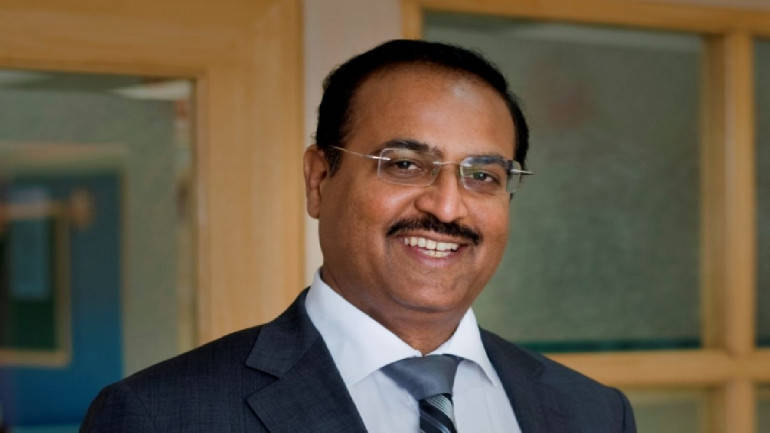Adding value beyond insurance
Across the service industry there is compelling evidence that to be relevant to all the rapidly changing risks and the evolving customer needs, holistic solutions need to be designed in and around the risks.

Tapan Singhel
The general perception about insurance is that it comes into play only during times of adversity and duress. Therefore, there is little wonder that insurers are perceived to have very low engagement levels with their customer base limited to typically policy purchase, claims, and renewals.
Some of the most valued new age technology companies of today such as Google and Apple have managed to create an eco-system where they offer a wide range of services beyond their core offerings to keep their customers hooked on and constantly engaged with them. However, compared to their banking and telecom counterparts, insurance firms have typically been at a disadvantage as their presence in customer transactions has been limited to relatively infrequent transactions, which severely dent the insurer’s chances to create long term positive associations.
To begin with there is the problem of persuading people that insurance is worth the buy. Most Indians don’t really like to dwell on impending disasters that they may face and rather than treating insurance as an investment, consider it to be money spent without any immediate returns. To address this issue caused mostly due to a perceived lack of engagement, insurers over the last few years, have been offering a range of value added services that go beyond insurance and claims.
At the heart of this trend, lies another important facet - the need for insurers to differentiate their offerings, given the product portfolio of all insurers are almost the same. Across the service industry there is compelling evidence that to be relevant to all the rapidly changing risks and the evolving customer needs, holistic solutions need to be designed in and around the risks. Insurers are no different and need to go even beyond offering mere risk management services. They need to build an entire eco-system for their customers, offering them a complete package of insurance related solutions sometimes by even bundling non-insurance services or requirements.
These value added services are typically delivered, complimentary to product offerings or can be availed as a part of the product itself. The complimentary services, are usually services that can be conjoined with the product from a customer’s context. These can range from discounts on online pharmacy, to online medical advice in case of health insurance, to home assistance services, such as plumber carpenter etc. available with home insurance. These services, when bundled with the products help derive value for the customer. One of the most important value added services in insurance being offered right now is Road Side Assistance. As a son, husband and a father, I understand the value of this service, which can help customers at the time of a breakdown due to non-accidental reasons. These can be due to a dead battery or even a flat tyre. Any service that makes customers lives more convenient, and makes them feel safer, is in essence a true value added service.
With access to technologies such as blockchain, advanced data analytics, Internet of Things, telematics, smart contracts, cloud computing and artificial intelligence insurers are further evolving and empowering customers. There is great value in doing this not just from an efficiency standpoint, but also from a time and convenience standpoint for customers. Customers can now settle their own claims, by simply using their smart phone. Blockchain has taken this a notch further, whereby customer’s claims are settled instantly, without any claim request from their side. By offering connected devices, which are fitted into the cars, insurers can, not just get real time access to data but also help the customer get a better understanding of their driving behaviour for efficient fuel consumption, navigate road conditions and remotely monitor the vehicle’s location.
It can also help in cost savings as currently premiums are being charged based on available information related to limited parameters such as the make, model and age of the vehicle. If accurate information and more relevant data are available, premium can be worked out more scientifically and also help in aiding better driving behaviour which consequently will also result in savings on fuel expenses. Such experiences are being gamified to engage customers even more. Value added services today are laying down context for products of tomorrow, like usage based Insurance.
In health insurance too, your provider may no longer be interchangeable given the differentiation that insurers are looking to create for their customers as their role is not limited to underwriting the risks or paying claims, but influencing and assisting the customer in reducing the risk altogether. Additionally health insurers are now also using smartphones as connected devices, with which you can monitor various aspects of your health. The insurance provider can be a trusted advisor helping you to manage chronic or lifestyle related conditions effectively, or even hit your target steps for the day, or keep track of your calorie intake.
Insurers today are already offering a bouquet of wellness and disease management services. These include preventive care offerings such as health counselling, stress and weight management, annual medical tests or any form of diagnostic tests to reduce your out of pocket expenditure towards out-patient treatments. There are also yoga classes or gym memberships through heavy discounts which add significant value to corporates and employees under group health insurance programmes. I personally feel that this entire “wellness ecosystem” will become the norm. The internet of things will see a host of services aimed at home management, energy consumption and smart homes so as to speak. These will also laydown the marker for on- demand services, where the insurer will also become the point contact for maintenance, repair and security.
All these services allow the insurer to regularly interact with the customer, giving a boost and reinforcement to their brand and facilitate constant engagement with its customer base. These days customers too are willing to share data with their insurance provider for a network of personalised offerings, services and cost savings.
Technology and the proliferation of smartphones is changing the paradigm of the very nature of insurance today. It is helping insurers reinvent their offerings, push boundaries and do the unexpected to truly offer a relationship beyond insurance and offer true customer delight and a 'Wow' experience. Insurers therefore need to constantly innovate and leverage on technological advancements to offer engagement and an active network. Unlike its traditional perception, it needs to gear up and be an active ally to its customers in planning, managing and cultivating a healthy and safe lifestyle!
The author is MD & CEO of Bajaj Allianz General Insurance

















